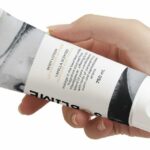Nicotine Pouches Canada – Notice of Intent & Routes to Market
By: Karolina Zarichna, REGULATORY, BUSINESS DEVELOPMENT & MARKETING SPECIALIST, email
Nicotine pouches and nicotine replacement therapy (NRT) products, including vapes, pose an increasingly concerning trend among Canadian youth, carrying significant health risks and impacting both short-term and long-term brain development.
This article summarized Health Canada’s recently issued Notice of Intent regarding Nicotine Pouches and explores existing regulations and pathways to market for products containing nicotine.
Notice of Intent for Nicotine Pouches
On March 20th, 2024, Health Canada issued a notice of intent regarding the appeal and accessibility of nicotine pouches to youth in Canada. The notice highlights Health Canada’s intentions to address the growing risks associated with the increased use of nicotine replacement therapies among young individuals. Health Canada is urging product manufacturers to adhere to approved licenses and claims when it comes to labelling and marketing their products. To tackle the serious health risks nicotine pouches pose to underage consumers, Health Canada is considering implementing new labelling regulations and adding limitations on certain colours, flavours, advertising, and sales locations. These limitations aim to reduce the appeal of nicotine pouches to Canadian youth, thereby protecting the vulnerable population from potentially harmful effects of these products.
Despite the increased risk and the use prevalence among Canadian youth, nicotine pouches provide a benefit and serve as an alternative to tobacco products, playing a part in the nicotine replacement therapy for individuals seeking to quit smoking or cease the use of other tobacco-based products. As such, it is important that such products are accessible for individuals relying on their benefits. However, the accessibility and marketing of these products under the current regulations remain an ongoing issue, necessitating a more stringent approach to nicotine pouches’ marketing and regulations.
Rationale for the Intent
The ongoing brain development in children and teenagers puts them at a higher risk of developing nicotine addictions. By implementing strategies to deter young individuals from using nicotine replacement products, Health Canada aims to maintain accessibility for the intended users while also safeguarding the well-being of children and teenagers, preventing associated health concerns and potential nicotine overdose.
How are nicotine pouches regulated in Canada?
In Canada, nicotine products are regulated under two divisions of regulatory affairs, Natural Health Products and Prescription Drugs. The applicable regulations, established by the Government of Canada, are determined by the amount of nicotine present in the product and the delivery method used to administer the active ingredients.
Nicotine as a Natural Health Product
Nicotine products are classified as a Natural Health Product and are regulated under the NHP Regulations under the following conditions:
- It is present in a natural substance.
- It is in a form of a chewing gum containing 4 mg or less of nicotine per dosage unit.
- It is in a form of a transdermal patchy with a delivery rate of 22 mg of less of nicotine per day.
- It is in a form to be administered into the oral cavity by means of non-active device (one that operates on energy generated by the human body or by gravity) that delivers 4 mg or less of nicotine per dose for buccal absorption.
- It is in a form of a lozenge containing 4 mg or less of nicotine per dosage unit.
Nicotine-containing products meeting the specified criteria must undergo a Class III product licence application process. This entails providing comprehensive safety and efficacy data, demonstrating the product’s ability to deliver nicotine safely and effectively, particularly in aiding smoking cessation and supporting associated health claims. Essential components of this application include conducting a minimum of two Phase II clinical trials with robust methodologies and appropriate duration, typically lasting between 6 and 12 weeks for smoking cessation studies. The primary endpoint should be assessed at 1 year, supplemented by adequate pharmacokinetic data comparing the nicotine pouch with other delivery methods such as gum, lozenge, or patch.
At minimum, a bioequivalence study comparing the nicotine pouch with approved alternative delivery methods is required to establish their comparable delivery of nicotine at the same rate. This study serves as a pivotal step in ensuring the safety and efficacy of this novel nicotine administration form.
All Class III product licence applications are subject to a 310-day assessment period by Health Canada. A Product Licence Application (PLA) form must be submitted to Health Canda, outlining the product’s information and specifications. Along with the PLA, companies must provide an evidence package including clinical studies meeting the above requirements.
Applications that provide sufficient safety and efficacy evidence are granted a product licence and are assigned a Natural Product Number (NPN). The NPN and core product information is then added to the publicly available NPN Database. Upon NPN issuance and product label compliance, licence holders can sell their products in Canada.
As of 2025, all Natural Health Product applications will be subject to a submission fee. To learn more about the upcoming changes, please read our blog post on NNHPD Announces Revised Proposal for Proposed NHP Fees.
Nicotine as a Prescription Drug
Nicotine or nicotine salt containing products, including nicotine pouches, are regulated as a Prescription Drug if the above referenced criteria is not met or if a new delivery method is proposed. As a result, these products are subject to a thorough scientific evaluation and must meet the safety, efficacy, and quality requirements.
In addition to these requirements, nicotine products in the Prescription Drug category will be assessed against the Prescription Drug List criteria outlined in section C.01.040.3 of the Food and Drug Regulations (FDR), which states the following:
In deciding whether to amend the Prescription Drug List in respect of a drug, including by adding the drug to it or removing the drug from it, the Minister shall consider whether any of the following criteria apply with respect to the drug:
(a) supervision by a practitioner is necessary
- for the diagnosis, treatment, mitigation or prevention of a disease, disorder or abnormal physical state, or its symptoms, in respect of which the drug is recommended for use, or
- to monitor a disease, disorder or abnormal physical state, or its symptoms, in respect of which the drug is recommended for use, or to monitor the use of the drug;
(b) the level of uncertainty respecting the drug, its use or its effects justifies supervision by a practitioner; or
(c) use of the drug can cause harm to human or animal health or a risk to public health and the harm or the risk can be mitigated by a practitioner’s supervision.
Furthermore, products using novel delivery methods will be classified as Prescription Drugs until sufficient evidence is provided to Health Canada to warrant their use without prescription.
As Prescription Drugs, nicotine-containing products necessitate a New Drug Submission (NDS) to be filed with Health Canada for assessment. A new NDS must encompass safety and efficacy studies for the specific product and provide clinical trial findings. In addition to these studies, applicants must provide data on abuse-potential assessments and reports on adverse drug reactions. The submission, along with a product label conforming to labelling regulations, will subsequently undergo individual evaluation by Health Canada before the issuance of a Notice of Compliance (NOC) and a Drug Identification Number (DIN).
Products meeting the criteria through a satisfactory review and those that comply with the Food and Drug Regulations and are granted a NOC. These compliant products are then listed in the publicly accessible Notice of Compliance Database, where essential product details are disclosed.
Following the issuance of an NOC, manufacturers are permitted to market their products in Canada. However, post-market studies must be conducted to monitor the drug’s safety and efficacy in real-world settings.
Summary of Nicotine Pouches in Canada
In summary, there are multiple avenues for bringing nicotine pouches and Nicotine Replacement Therapy (NRT) products to market. The suitable pathway depends on the nicotine content and delivery method of the product. Proper classification is crucial as the initial step in selecting the most suitable route. Furthermore, adherence to established regulations and marketing standards is vital to protect Canadian youth and guarantee adequate access to these products for those who rely on them.
Dell Tech has provided professional, confidential consulting services to the specialty chemical
industry in Canada, the USA, Europe, and Asia for the last 40 years.







